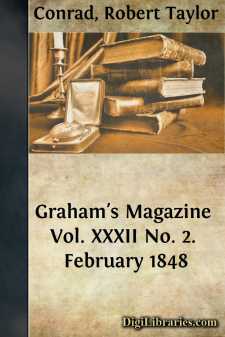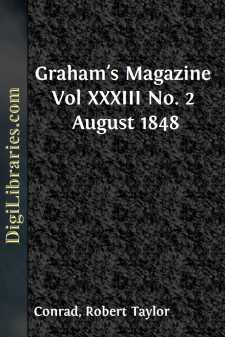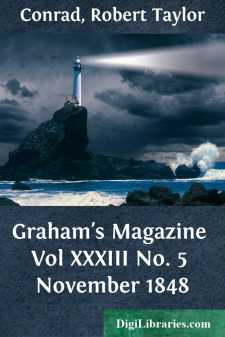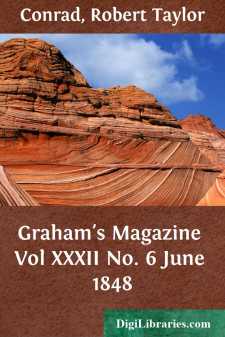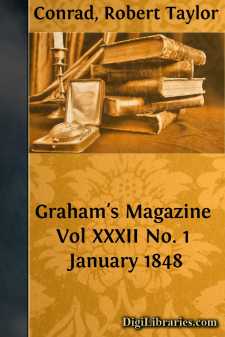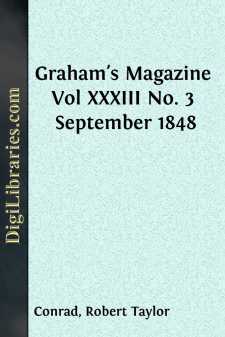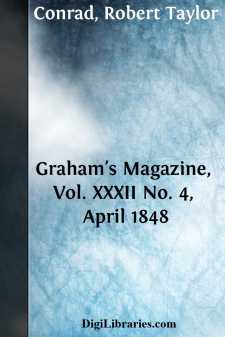Categories
- Antiques & Collectibles 13
- Architecture 36
- Art 48
- Bibles 22
- Biography & Autobiography 813
- Body, Mind & Spirit 142
- Business & Economics 28
- Children's Books 15
- Children's Fiction 12
- Computers 4
- Cooking 94
- Crafts & Hobbies 4
- Drama 346
- Education 46
- Family & Relationships 57
- Fiction 11828
- Games 19
- Gardening 17
- Health & Fitness 34
- History 1377
- House & Home 1
- Humor 147
- Juvenile Fiction 1873
- Juvenile Nonfiction 202
- Language Arts & Disciplines 88
- Law 16
- Literary Collections 686
- Literary Criticism 179
- Mathematics 13
- Medical 41
- Music 40
- Nature 179
- Non-Classifiable 1768
- Performing Arts 7
- Periodicals 1453
- Philosophy 64
- Photography 2
- Poetry 896
- Political Science 203
- Psychology 42
- Reference 154
- Religion 513
- Science 126
- Self-Help 84
- Social Science 81
- Sports & Recreation 34
- Study Aids 3
- Technology & Engineering 59
- Transportation 23
- Travel 463
- True Crime 29
Graham's Magazine Vol. XXXII No. 2. February 1848
Categories:
Description:
Excerpt
The Manor of Stoke, with its magnificent mansion and picturesque park, is situate near the village of Stoke Pogeys, in the county of Buckingham, four miles north-west of Windsor.
About two miles distant from Stoke lies the village of Slough, rendered famous by the residence of the celebrated astronomer, Sir William Herschel, and a short way further, on a gentle slope continued the whole way from Stoke, stand the venerable towers of time-honored Eton, on the bank of the Thames, directly opposite, and looking up to the proud castle of the kings of England, unmatched in its lofty, commanding situation and rich scenery by that of any royal residence in Europe.
Stoke, anciently written Stoches, belonged, in the time of William the Conqueror, A. D. 1086, to William, son of Ansculf, of whom it was held by Walter de Stoke. Previous thereto, it was in part held by Siret, a vassal of Harold, and at the same time, a certain Stokeman, the vassal of Tubi, held another portion. Finally, in the year 1300, during the reign of King Edward the First, it received its present appellation by the intermarriage of Amicia de Stoke, the heiress, with Robert de Pogeys. Under the sovereignty of Edward the Third, 1346, John de Molines, originally of French extraction, and from the town of that name in Bourbonnais, married Margaret de Pogeys; and, in consequence of his eminent services, obtained license of the king to make a castle of his manor-house of Stoke Pogeys, fortify with stone walls embattled, and imparke the woods; also that it should be exempt from the authority of the marshal of the king's household, or any of his officers; and in further testimony of the king's favor, he had summons to Parliament among the barons of the realm.
During the wars of the rival Roses, the place was owned by Sir Robert Hungerford, commonly called Lord Moleyns, by reason of his marriage with Alianore, daughter of William, Lord Moleyns.
This Lord Robert, siding with the Lancasterians, or the Red Roses, upon the loss of the battle of Towton, fled to York, where King Henry the Sixth then was, and afterward with him into Scotland. He was attainted by the Parliament of Edward the Fourth; but the king took compassion on Alianore, his wife, and her children, committing her and them to the care of John, Lord Wenlock, to whom he had granted all her husband's manors and lands, granting them a fitting support as long as her said husband, Lord Robert, should live. But the Lancasterians making head in the north, he "flew out" again, being the chief of those who were in the castle of the Percys, at Alnwick, with five or six hundred Frenchmen, and being taken prisoner at the battle of Hexham, he was beheaded at Newcastle on Tyne, but buried in the north aisle of the cathedral of Salisbury.
Lady Alianore, his widow, lies buried in the church of Stoke Pogeys; and her monument may still be seen, with an epitaph commencing thus:
Hic, hoc sub lapide sepelitur Corpus venerabilisDominæAlianoræ Molins, Baronissiæ, quam
prius desponsavit Dominus Robertus Hungerford,
miles et Baro. &c. &c.
Notwithstanding the grant to Lord Wenlock, Thomas, the son and heir of Lord Robert Hungerford, succeeded to the estate....


